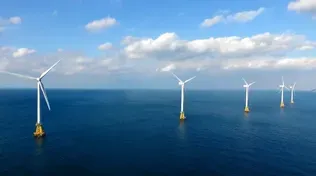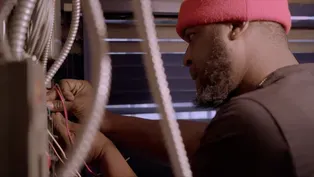
Why Induction Stoves Are Better for You and the Environment
Clip: Season 50 Episode 6 | 2m 56sVideo has Closed Captions
Induction stovetops are an energy-efficient alternative to traditional gas stoves.
These stoves use electricity to create a magnetic field that causes the electrons inside pots and pans that contain iron to vibrate tens of thousands of times. This creates the friction and heat needed for cooking without the energy or fumes from gas stoves.
Additional funding is provided by the NOVA Science Trust with support from Anna and Neil Rasmussen, Howard and Eleanor Morgan, and the Arthur Vining Davis Foundations. Major funding for NOVA...

Why Induction Stoves Are Better for You and the Environment
Clip: Season 50 Episode 6 | 2m 56sVideo has Closed Captions
These stoves use electricity to create a magnetic field that causes the electrons inside pots and pans that contain iron to vibrate tens of thousands of times. This creates the friction and heat needed for cooking without the energy or fumes from gas stoves.
How to Watch NOVA
NOVA is available to stream on pbs.org and the free PBS App, available on iPhone, Apple TV, Android TV, Android smartphones, Amazon Fire TV, Amazon Fire Tablet, Roku, Samsung Smart TV, and Vizio.
Buy Now

NOVA Labs
NOVA Labs is a free digital platform that engages teens and lifelong learners in games and interactives that foster authentic scientific exploration. Participants take part in real-world investigations by visualizing, analyzing, and playing with the same data that scientists use.Providing Support for PBS.org
Learn Moreabout PBS online sponsorship- [Miles] Traditional electric stoves create heat by simply resisting the electric current, but newer induction cooktops use electricity to create a magnetic field.
The electrons inside pots and pans that contain iron try to align with the magnet, vibrating tens of thousands of times per second, creating friction and heat.
The result is better energy efficiency, faster cooking, and no combustion fumes.
The main ingredient of natural gas is methane, and research shows burning it in a kitchen can be harmful to human health because it triggers a reaction between nitrogen and oxygen, which creates nitric oxide and nitrogen dioxide, pollutants collectively known as NOx gases.
They can cause all sorts of cardiovascular and respiratory illnesses, including asthma.
They have caught on in commercial kitchens in Europe and Asia, but in the US, chefs are skeptical.
- So rest of the world is looking at us going, "What are you complaining about?"
Because effectively we're arguing about how to get a piece of metal hot so we can cook.
- [Miles] The fossil fuel industry has done a good job at inducing resistance.
♪ Cooking with gas ♪ ♪ Cooking with gas ♪ - We all remember the rap in the '80s.
♪ We all cook better when we're cooking with gas ♪ - It's cringeworthy.
♪ Cooking with gas, cooking with gas ♪ ♪ We all cook better when we're cooking with gas ♪ - There's a lot to unpack there.
♪ I cook with gas 'cause the cost is much less ♪ ♪ Than electricity ♪ - But you know what, that was effective.
What was said in there still gets said today.
Cooking with gas is cheaper, it's more precise.
All these things, which are just not true.
♪ We're cooking with gas ♪ - Today, Chris is an independent consultant who travels the country promoting induction in commercial kitchens.
He gave me a quick demonstration.
Okay, so this has been in the freezer?
- Correct.
So this is just to show how quickly things come up to temp.
So we're gonna dump this.
- Oh yeah, it's cold.
- So just getting the water off.
You can tell things are hot.
How hot?
- All right, that was in the matter of, what?
- Seconds.
- Yeah.
- Right.
And so there's no more preheating.
It's just straight hot and it doesn't take long.
All right, shrimp, got some good color on it.
Add our sauce.
And there you go.
- [Miles] That was dinner in about two minutes.
- In a fraction of the time.
And here's a beautiful thing, we just did all of that, not a sweat on you.
Nothing gets hot except for the pan itself.
So it's time for us to evolve, to get together, and say what's better for our world, and cooking with a flame is not.
Video has Closed Captions
Here’s how the U.S. could reach net-zero carbon emissions by 2050. (29s)
Chasing Carbon Zero Sneak Peek
Video has Closed Captions
A new film from NOVA examines technologies that could get us to carbon zero by 2050. (1m)
How Heat Pumps Can Help Cities Lower Carbon Emissions
Video has Closed Captions
Landlords are switching from gas furnaces to heat pumps to reduce their carbon footprint. (4m 17s)
Providing Support for PBS.org
Learn Moreabout PBS online sponsorshipAdditional funding is provided by the NOVA Science Trust with support from Anna and Neil Rasmussen, Howard and Eleanor Morgan, and the Arthur Vining Davis Foundations. Major funding for NOVA...















